The Story of the Malakand Field Force by Winston S. Churchill (guided reading books txt) 📕
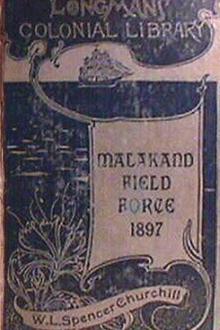
- Author: Winston S. Churchill
- Performer: -
Book online «The Story of the Malakand Field Force by Winston S. Churchill (guided reading books txt) 📕». Author Winston S. Churchill
Desultory firing was maintained by the tribesmen all day.
While the close and desperate fighting, which has been described, was raging in the south camp, the north camp had not been seriously involved, and had spent a quiet, though anxious night. On the sound of the firing on the Kotal being heard, four guns of No.8 Mountain Battery were moved over to the south-east side of the camp, and several star shells were fired. No large body of the enemy was however discovered.
Twice during the night the camp was approached by the tribesmen, but a few rounds of shrapnel were sufficient to drive these away.
When General Meiklejohn found that the garrison of the north camp had not been severely engaged, he ordered a force consisting of two guns and the 31st Punjaub Infantry, under Major Gibbs, covered by forty sowars of the 11th Bengal Lancers, and supported by a wing of the 24th, to move out, reconnoitre the valley and clear it, as much as possible, of the enemy. The column advanced in pursuit as far as Bedford Hill. Here they came upon a large gathering of tribesmen, and as it was now evident that a great tribal rising had broken out, Major Gibbs was ordered to return and to bring his stores and troops into the Kotal camp without delay.
The infantry and guns thereupon retired and fell back on the camp, covered by the 24th Punjaub Infantry.
As this regiment was being withdrawn, a sudden attack was made from the high ground above the Buddhist road, and directed against the left flank of the troops. A front was immediately shown, and the 24th advanced to meet their assailants. Lieutenant Climo, who commanded, detached a company to the right, and by this turning movement drove them off, inflicting some loss and capturing a standard. This officer’s skill and conduct in this retirement was again the subject of commendation in despatches. The troops reached their respective camps at about 11
o’clock. Meanwhile the cavalry had been ordered to push on, if possible, to Chakdara and reinforce the garrison at that post. The task was one of considerable danger, but by crossing and recrossing the Swat River, the squadron managed to cut their way through the tribesmen and reached the fort with slight loss. This brilliant ride will receive a fuller description in a later chapter.
The evacuation of the north camp proceeded very slowly. The troops packed up their kits with great deliberation, and applications were made for transport. None was, however, available. All the camels were at Dargai, on the Indian side of the mountains. Repeated orders to hurry were sent from the Kotal. All hated leaving their belongings behind, having no confidence in the liberality of a paternal Government. As the afternoon passed, the aspect of the enemy became very threatening and formidable. Great numbers drew near to the camp, and the guns were compelled to fire a good many rounds. At length, at 4 o’clock, imperative orders were sent that the north camp was to be at once abandoned, that the force there was to march to the Kotal, and that all baggage and stores, not yet removed, were to be left where they were.
All the tents were struck, but nothing else could be done, and to the deep disgust of all—officers and men—their property was left to the mercies of the enemy. During the night it was all looted and burnt. Many of the officers thus lost every stitch of clothing they possessed. The flames rising from the scene of destruction were visible far and wide, and the tribesmen in the most distant valleys were encouraged to hurry to complete the slaughter of the accursed infidels.
It cannot be doubted, however, that the concentration of the troops was a wise and judicious step. The garrison of the Kotal and south camp was insufficient, and, whatever happened, it was better for the troops to stand or fall together. The situation was also aggravated by the appearance of large numbers of tribesmen from the Utman Khel country, who crowded the hills to the west of the camp, and thus compelled the defenders to hold a greatly extended line. The abandonment of the north camp was carried out none too soon, for the enemy pressed the withdrawal of the troops, and they reached the south camp under cover of the fire of the 24th Punjaub Infantry, and the Guides Cavalry. These latter had arrived in camp at 8.30 that morning after marching all night. They found plenty of employment.
The telegraph had carried the news of the events of the night to all parts of the world. In England those returning from Goodwood Races read the first details of the fighting on the posters of the evening papers.
At Simla, the Government of India awoke to find themselves confronted with another heavy task. Other messages recalled all officers to their regiments, and summoned reinforcements to the scene by road and rail. In the small hours of the 27th, the officers of the 11th Bengal Lancers at Nowshera were aroused by a frantic telegraph operator, who was astounded by the news his machine was clicking out. This man in his shirt sleeves, with a wild eye, and holding an unloaded revolver by the muzzle, ran round waking everyone. The whole country was up. The Malakand garrison was being overwhelmed by thousands of tribesmen. All the troops were to march at once. He brandished copies of the wires he had received. In a few moments official instructions arrived. The 11th Bengal Lancers, the 38th Dogras and the 35th Sikhs started at dawn. No.1 and No.7 British Mountain Batteries were also ordered up. The Guides Cavalry had already arrived. Their infantry under Lieutenant Lockhart reached the Kotal at 7.30 P.M. on the 27th, having, in spite of the intense heat and choking dust, covered thirty-two miles in seventeen and a half hours. This wonderful feat was accomplished without impairing the efficiency of the soldiers, who were sent into the picket line, and became engaged as soon as they arrived. An officer who commanded the Dargai post told me, that, as they passed the guard there, they shouldered arms with parade precision, as if to show that twenty-six miles under the hottest sun in the world would not take the polish off the Corps of Guides. Then they breasted the long ascent to the top of the pass, encouraged by the sound of the firing, which grew louder at every step.
Help in plenty was thus approaching as fast as eager men could march, but meanwhile the garrison had to face the danger as best they could alone. As the 31st Punjaub Infantry, who had been the last to leave the north camp, were arriving at the Kotal, about 1000 tribesmen descended in broad daylight and with the greatest boldness, and threatened their left flank. They drove in two pickets of the 24th, and pressed forward vigorously. Lieutenant Climo with two companies advanced up the hill to meet them, supported by the fire of two guns of the Mountain Battery. A bayonet charge was completely successful. The officers were close enough to make effective use of their revolvers. Nine bodies of the enemy were left on the ground, and a standard was captured. The tribesmen then drew off, and the garrison prepared for the attack, which they knew would come with the dark.
As the evening drew on the enemy were observed assembling in ever-increasing numbers. Great crowds of them could be seen streaming along the Chakdara road, and thickly dotting the hills with spots of white.
They all wore white as yet. The news had not reached Buner, and the sombre-clad warriors of Ambeyla were still absent. The glare of the flames from the north camp was soon to summon them to the attack of their ancient enemies. The spectacle as night fell was strange, ominous, but not unpicturesque. Gay banners of every colour, shape and device, waved from the surrounding hills. The sunset caught the flashing of swordblades behind the spurs and ridges. The numerous figures of the enemy moved busily about preparing for the attack. A dropping fire from the sharpshooters added an appropriate accompaniment. In the middle, at the bottom of the cup, was the “crater” camp and the main enclosure with the smoke of the evening meal rising in the air. The troops moved to their stations, and, as the shadows grew, the firing swelled into a loud, incessant roar.
The disposition of the troops on the night of the 27th was as follows:—
1. On the right Colonel McRae, with 45th Sikhs and two guns supported by 100 men of the Guides Infantry, held almost the same position astride the Buddhist road as before.
2. In the centre the enclosure and Graded road were defended by—
31st Punjaub Infantry.
No.5 Company Q.O. Sappers and Miners.
The Guides.
Two Guns.
3. On the left the 24th Punjaub Infantry, with the two remaining guns under Lieutenant Climo, held the approaches from the abandoned north camp and the fort.
Most of this extended line, which occupied a great part of the rim, was formed by a chain of pickets, detached from one another, and fortified by stone breastworks, with supports in rear. But in the centre the old line of the “Sappers’ and Miners’ enclosure” was adhered to. The bazaar was left to the enemy, but the serai, about a hundred yards in front of the main entrenchment, was held by a picket of twenty-four men of the 31st Punjaub Infantry, under Subadar Syed Ahmed Shah. Here it was that the tragedy of the night occurred.
At eight o’clock, the tribesmen attacked in tremendous force all along the line. The firing at once became intense and continuous. The expenditure of ammunition by the troops was very great, and many thousands of rounds were discharged. On the right Colonel McRae and his Sikhs were repeatedly charged by the swordsmen, many of whom succeeded in forcing their way into the pickets and perished by the bayonet.
Others reached the two guns and were cut down while attacking the gunners. All assaults were however beaten off. The tribesmen suffered terrible losses. The casualties among the Sikhs were also severe. In the morning Colonel McRae advanced from his defences, and, covered by the fire of his two guns, cleared the ground in his front of the enemy.
The centre was again the scene of severe fighting. The tribesmen poured into the bazaar and attacked the serai on all sides. This post was a mud-walled enclosure about fifty yards square. It was loopholed for musketrey, but had no flank defences. The enemy made determined efforts to capture the place for several hours. Meanwhile, so tremendous was the fire of the troops in the main enclosure, that the attack upon the serai was hardly noticed. For six hours the picket there held out against all assaults, but the absence of flank defences enabled the enemy to come close up to the walls. They then began to make holes through them, and to burrow underneath. The little garrison rushed from place to place repelling these attacks. But it was like caulking a sieve. At length the tribesmen burst in from several quarters, and the sheds inside caught fire. When all the defenders except four were killed or wounded, the Subadar, himself struck by a bullet, ordered the place to be evacuated, and the survivors escaped by a ladder over the back wall, carrying their wounded with them. The bodies of

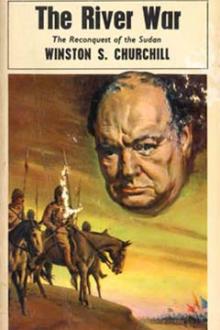
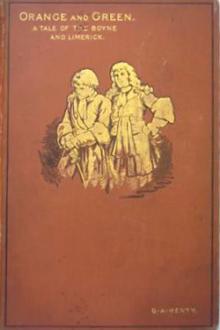
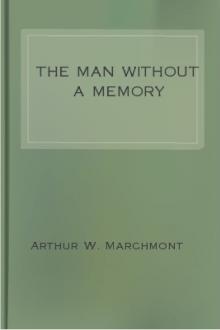
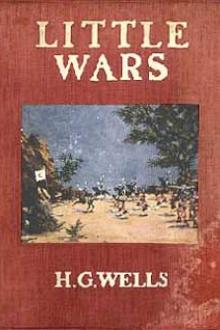
Comments (0)